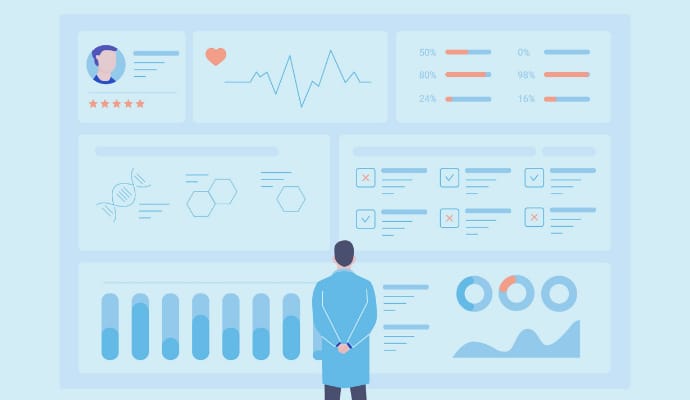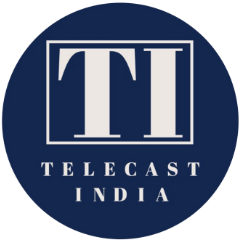Table of Contents
Introduction
In today’s rapidly evolving world, healthcare stands as a cornerstone of human well-being, offering vital services, support, and solutions to individuals and communities around the globe. From preventive care and medical treatments to public health initiatives and technological innovations, healthcare encompasses a vast array of services and systems dedicated to promoting and maintaining health.
In this article, we explore the dynamic landscape of healthcare, from the innovative advancements shaping the future of medicine to the persistent challenges and disparities that must be addressed.
Through a holistic lens, we examine the pursuit of wellness in all its dimensions, guided by principles of compassion, innovation, and equity.
As we navigate the complexities of healthcare in the 21st century, we are reminded of the interconnectedness of health and the importance of collective action in building a healthier, more resilient world.
Promoting Health and Well-being
This section delves into the paradigm shift towards patient-centered care and preventive medicine within the healthcare landscape. It explores how healthcare providers are increasingly prioritizing personalized approaches that consider individual needs, preferences, and values.
By placing the patient at the center of care, healthcare professionals aim to foster stronger doctor-patient relationships, improve communication, and enhance treatment outcomes.
Moreover, the importance of preventive medicine is emphasized, with discussions on the role of early intervention, health screenings, lifestyle modifications, and vaccination campaigns in reducing the burden of chronic diseases and promoting overall wellness.
Through proactive strategies and patient empowerment, the healthcare industry is striving to shift focus from treating illness to promoting health and well-being proactively.
Promoting health and well-being is a multifaceted endeavor that encompasses a wide range of strategies, interventions, and initiatives aimed at enhancing physical, mental, and social well-being for individuals and communities.
At its core, promoting health and well-being involves empowering individuals to take an active role in managing their health, making informed choices, and adopting healthy behaviors that contribute to a higher quality of life.

This includes promoting regular physical activity, healthy eating habits, adequate sleep, stress management, and avoidance of harmful substances such as tobacco and excessive alcohol. Moreover, promoting health and well-being extends beyond individual behaviors to encompass broader social, economic, and environmental factors that influence health outcomes.
Efforts to create supportive environments, strengthen social networks, and address social determinants of health, such as poverty, education, housing, and access to healthcare, are essential for promoting health equity and reducing disparities in health outcomes.
Additionally, promoting mental health and emotional well-being is critical for overall health and resilience. This includes raising awareness about mental health issues, reducing stigma, and providing access to mental health services and support.

By fostering a holistic approach to health and well-being that addresses the interconnectedness of physical, mental, and social factors, we can create healthier communities and improve quality of life for individuals across the lifespan.
Technological Innovations
In today’s rapidly advancing world, technology is revolutionizing every aspect of our lives, and healthcare is no exception. This section delves into the transformative impact of technological innovations on diagnosis, treatment, and patient care within the healthcare landscape.
Advancements in medical technology have significantly enhanced the ability of healthcare professionals to diagnose diseases accurately and efficiently.
From sophisticated imaging techniques such as MRI, CT scans, and ultrasound to high-tech laboratory tests and genetic sequencing, healthcare providers now have access to a wealth of diagnostic tools that enable them to identify conditions with greater precision and speed than ever before.
Furthermore, the integration of digital health technologies, such as electronic health records (EHRs), telemedicine platforms, and wearable health monitoring devices, has transformed the way patient care is delivered and managed.

Telemedicine platforms enable remote consultations and virtual visits, providing patients with convenient access to healthcare services from the comfort of their own homes. Wearable devices, such as smartwatches and fitness trackers, allow individuals to monitor their health metrics in real-time and track progress towards their wellness goals.
Artificial intelligence (AI) and machine learning algorithms are also playing an increasingly important role in healthcare, offering new opportunities for personalized medicine and predictive analytics.
Robotic systems, such as the da Vinci Surgical System, enable minimally invasive procedures that result in smaller incisions, less pain, and faster healing compared to traditional open surgery. As a result, patients experience shorter hospital stays, reduced risk of complications, and improved overall outcomes.
In addition to improving diagnosis and treatment, technology is also enhancing the delivery of patient care and improving healthcare outcomes. Patient portals and mobile health apps empower individuals to take an active role in managing their health by providing access to personalized health information, appointment scheduling, medication reminders, and wellness resources.
AI-powered diagnostic tools can analyze medical images, pathology slides, and patient data to identify patterns, detect anomalies, and assist healthcare providers in making more accurate and timely diagnoses. Machine learning algorithms can predict patient outcomes, recommend treatment options, and optimize care pathways based on large datasets and clinical evidence.
Moreover, the rise of robotic-assisted surgery has revolutionized surgical procedures, offering greater precision, flexibility, and control to surgeons while minimizing invasiveness and reducing recovery times for patients.

Virtual reality (VR) and augmented reality (AR) are being used to train healthcare professionals, simulate medical procedures, and educate patients about their conditions and treatment options in immersive and interactive ways.
Furthermore, the use of big data analytics and predictive modeling is enabling healthcare organizations to identify trends, predict disease outbreaks, and optimize resource allocation for more effective population health management.
By analyzing vast amounts of health data, including electronic health records, medical claims, and social determinants of health, healthcare providers can identify high-risk populations, target interventions, and tailor care plans to meet the unique needs of individuals and communities.
Ensuring Access and Equity in Healthcare
In this section, we delve into the persistent challenges and disparities within the healthcare landscape and explore efforts to address them to ensure access and equity for all individuals and communities.
Healthcare disparities, often rooted in socioeconomic factors, geographic location, race, ethnicity, gender, age, disability, and other social determinants of health, continue to pose significant barriers to accessing quality care. Individuals from marginalized and underserved populations often face disproportionate burdens of disease, limited access to healthcare services, and poorer health outcomes compared to their more privileged counterparts.
One of the key challenges in addressing healthcare disparities is ensuring equitable access to healthcare services for all individuals, regardless of their socioeconomic status or geographic location. In many regions, rural and remote communities face barriers such as limited healthcare infrastructure, shortage of medical professionals, and lack of transportation, making it difficult for residents to access timely and appropriate care.

Another critical aspect of addressing healthcare disparities is tackling social determinants of health, such as poverty, education, housing, employment, and access to healthy food and clean water.
These factors have a profound impact on health outcomes and contribute to disparities in disease prevalence, healthcare utilization, and mortality rates.
Efforts to address social determinants of health involve collaboration between healthcare providers, community organizations, government agencies, and other stakeholders to implement policies and programs that promote health equity and address the underlying root causes of disparities.
By expanding access to healthcare services, promoting culturally competent care, addressing social determinants of health, and improving healthcare affordability, we can work towards building a healthcare system that is more inclusive, equitable, and responsive to the needs of all individuals and communities.
Ensuring access and equity in healthcare is essential for achieving universal health coverage and promoting health equity for all individuals and communities.

Access to healthcare services, including preventive care, medical treatments, and essential medications, is a fundamental human right and a cornerstone of public health. However, disparities in access to healthcare persist, often driven by socioeconomic factors, geographic location, race, ethnicity, gender, age, disability, and other social determinants of health.
One of the key challenges in ensuring access and equity in healthcare is addressing barriers that prevent individuals from seeking and receiving timely and appropriate care. These barriers may include lack of health insurance coverage, financial constraints, transportation issues, language barriers, cultural beliefs, and discrimination.
Individuals from marginalized and underserved populations, including racial and ethnic minorities, low-income individuals, immigrants, LGBTQ+ individuals, and people with disabilities, are disproportionately affected by these barriers and may experience disparities in access to care and health outcomes as a result.
Lessons Learned from the COVID-19 Pandemic
It delves into the unprecedented challenges and lessons learned from the COVID-19 pandemic, highlighting the importance of building resilience and preparedness in the face of global health crises.
THE COVID-19 pandemic,https://www.youtube.com/live/D3uOATBbv40?si=2cHKB2pIguzbkpeK caused by the novel coronavirus SARS-CoV-2, has tested healthcare systems, economies, and societies worldwide, underscoring the interconnectedness of health and the need for collective action to protect public health and safety. As countries grappled with surging cases, overwhelmed hospitals, and unprecedented disruptions to daily life, the pandemic revealed gaps in preparedness, weaknesses in healthcare infrastructure, and disparities in access to care.
One of the key lessons learned from the COVID-19 pandemic is the importance of early detection and rapid response in containing infectious disease outbreaks.

Early detection through widespread testing, contact tracing, and surveillance enables public health authorities to identify and isolate cases, prevent transmission, and implement targeted interventions to control the spread of the virus.
Furthermore, timely communication and transparent sharing of information are essential for building public trust, mobilizing resources, and coordinating a unified response to the crisis.
Moreover, the COVID-19 pandemic highlighted the critical role of vaccines in preventing and controlling infectious diseases.
The rapid development and deployment of COVID-19 vaccines, made possible by unprecedented collaboration between scientists, researchers, and pharmaceutical companies, demonstrated the power of science and innovation in responding to global health emergencies.
Vaccination campaigns have played a pivotal role in reducing the burden of COVID-19, protecting vulnerable populations, and restoring a sense of normalcy to communities around the world.
Additionally, the pandemic underscored the importance of investing in healthcare infrastructure, strengthening healthcare systems, and building capacity to respond to future health crises.
Adequate funding, resources, and support for healthcare workers, hospitals, and public health agencies are essential for ensuring that communities are prepared to withstand and respond to emergencies effectively. This includes stockpiling medical supplies, enhancing surge capacity, and investing in research and development to develop new therapies, treatments, and vaccines.
Furthermore, the COVID-19 pandemic highlighted the need for global solidarity and cooperation in addressing shared health challenges. International collaboration, information sharing, and coordinated efforts are essential for preventing the spread of infectious diseases across borders and mitigating the impact of pandemics on a global scale. Initiatives such as the COVAX facility, which aims to ensure equitable access to COVID-19 vaccines for low- and middle-income countries, exemplify the importance of solidarity and shared responsibility in combating global health threats.
In conclusion, the COVID-19 pandemic has been a wake-up call for the world, highlighting the need for resilience, preparedness, and collaboration in addressing global health crises.

By learning from the lessons of the pandemic, investing in healthcare infrastructure, strengthening healthcare systems, and fostering international cooperation, we can build a more resilient and sustainable healthcare landscape that is better equipped to respond to future challenges and protect the health and well-being of all individuals and communities.
Conclusion
In conclusion, the landscape of healthcare is characterized by a dynamic interplay of innovations, challenges, and lessons learned. From patient-centered care and preventive medicine to technological advancements, efforts to address disparities, and responses to global health crises, the healthcare industry continues to evolve in response to changing needs and circumstances.
Patient-centered care and preventive medicine have emerged as guiding principles in healthcare delivery, emphasizing the importance of personalized approaches and proactive strategies to promote health and well-being. By empowering individuals to take control of their health and addressing risk factors early, healthcare providers aim to improve outcomes and enhance the quality of life for patients.
Technological innovations have transformed every aspect of healthcare, from diagnosis and treatment to patient care and population health management. Digital health technologies, artificial intelligence, robotics, and telemedicine are revolutionizing the way healthcare services are delivered and accessed, offering new tools and approaches to improve efficiency, accuracy, and patient experiences.
However, alongside these advancements, healthcare also faces persistent challenges and disparities that must be addressed to ensure access and equity for all individuals and communities. Socioeconomic factors, geographic location, and social determinants of health continue to contribute to disparities in access to care, quality of care, and health outcomes, highlighting the need for targeted interventions and policies to address underlying root causes.
Moreover, the COVID-19 pandemic has underscored the importance of resilience, preparedness, and collaboration in responding to global health crises. Lessons learned from the pandemic, including the importance of early detection, rapid response, vaccination, and international cooperation, have informed efforts to strengthen healthcare systems and build capacity to withstand future challenges.
Moving forward, it is essential to continue building on the progress made in healthcare delivery and addressing the underlying disparities and challenges that persist. This requires a multifaceted approach that involves collaboration between healthcare providers, policymakers, communities, and other stakeholders to promote health equity, improve access to care, and enhance healthcare outcomes for all individuals.
By embracing innovation, fostering collaboration, and prioritizing equity and inclusion, we can build a healthcare landscape that is more responsive, resilient, and equitable. Ultimately, the pursuit of wellness requires a collective effort to address the complex interplay of factors that influence health and well-being, and to ensure that all individuals have access to the care and support they need to live healthy and fulfilling lives. For more such information you can visit this https://telecastindia.in/?p=4484(opens in a new tab)
Discover more from Telecast India
Subscribe to get the latest posts sent to your email.
